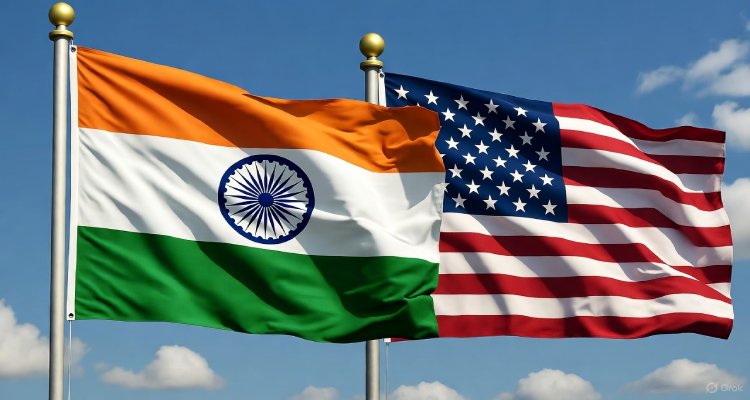India, US Ink New 10-Year Defence Framework to Strengthen Strategic Ties
India and the US have signed a new 10-year defence framework to deepen bilateral cooperation, focusing on technology, industry, and a free Indo-Pacific vision.
A New Era in Defence Cooperation
India and the United States have signed a landmark 10-year defence framework agreement aimed at redefining their strategic partnership in military technology, industrial collaboration, and regional security. The pact was inked in Kuala Lumpur on October 31, following a meeting between Defence Minister Rajnath Singh and US Secretary of War Pete Hegseth on the sidelines of the 12th ASEAN Defence Ministers’ Meeting-Plus (ADMM-Plus).
The new framework signifies more than just routine continuity. It stands as a unified vision to expand and strengthen the partnership between the world’s two largest democracies as they navigate a complex Indo-Pacific security landscape.
Image alt text: India and US defence ministers signing a new cooperation framework during ADMM-Plus in Kuala Lumpur, October 2025.
Strategic Context and Background
The agreement comes as the validity of the previous 2015 framework concluded, marking a natural moment to reassess shared priorities. Over the past decade, India-US defence ties have evolved from cautious collaboration into a robust, technology-driven partnership anchored in shared security concerns and liberal democratic values.
Since the designation of India as a Major Defence Partner by the US in 2016, both countries have established several foundational military agreements. These include:
-
LEMOA (2016): Logistics Exchange Memorandum of Agreement enabling reciprocal use of bases for repairs and supplies.
-
COMCASA (2018): Ensuring secure and compatible communications networks between the two militaries.
-
BECA (2020): Basic Exchange and Cooperation Agreement enabling the exchange of advanced geospatial intelligence and high-end technology.
Together, these pacts have laid the foundation for a strategic environment conducive to the new 10-year defence framework.
Key Developments and Significance
In their meeting, Singh and Hegseth reviewed ongoing defence projects and highlighted persistent challenges in regional security. They noted that the momentum in cooperation—whether in joint exercises, defence production, or intelligence sharing—remains stronger than ever.
Hegseth emphasized India’s strategic importance in the US’s Indo-Pacific vision, reaffirming Washington’s commitment to ensuring a free, open, and rules-based regional order. The meeting also served to synchronize goals in emerging domains like artificial intelligence, unmanned aerial systems, and space defence, symbolizing a shift from transactional cooperation to long-term strategic integration.
The newly signed Framework for the US-India Major Defence Partnership aims to institutionalize these efforts with clear policy direction and expanded industry collaboration. Importantly, it envisions co-development and co-production of defence equipment under India’s “Make in India” initiative, boosting both strategic autonomy and industrial capacity.
Expert Insight and Reactions
Defence analysts have welcomed the agreement as timely and forward-looking. Retired Air Marshal P. S. Ahluwalia commented that “the ten-year framework reflects India’s emergence as a global defence partner, not merely a buyer. It provides policy certainty and mutual accountability necessary for high-end defence cooperation.”
Brookings Institution’s security scholar, Lisa Curtis, highlighted the geostrategic undertones of the announcement: “This deal is as much about deterring coercion in the Indo-Pacific as it is about deepening industrial partnerships. It reinforces the Quad’s agenda for collective security and technological resilience.”
Public sentiment within strategic circles also leans positive, viewing the agreement as a pragmatic step in safeguarding India’s maritime and cyber interests amid growing regional tensions.
Broader Impact and Future Implications
The framework’s implications extend well beyond bilateral equations. It underscores a realignment within Asia’s defence architecture at a time of shifting global power balances. The 10-year horizon provides continuity for high-value joint projects—ranging from aircraft engine technology transfer to marine domain awareness systems—and positions both militaries for greater interoperability during joint exercises.
For India, the agreement complements its broader goal of achieving defence self-reliance while accessing critical technologies otherwise restricted under export control regimes. For the United States, it represents a deeper foothold in South Asia’s strategic environment, vital to maintaining balance in the Indo-Pacific theatre.
Economically, the new framework is likely to stimulate the domestic defence industry through joint R&D and production initiatives. American defence manufacturers may find a more predictable policy environment for long-term investment, while Indian public and private sector players stand to gain from technology inflows and skill development.
Strategically, both nations reaffirmed their participation in regional platforms like the Quad and ADMM-Plus, underscoring a shared commitment to the stability of sea lanes, counter-terrorism cooperation, and regional transparency.
Conclusion: Charting the Next Decade of Partnership
As the curtain falls on the 2015-era defence pact, the new 10-year US-India Major Defence Partnership Framework ushers in a deeper, more structured era of collaboration. It moves the relationship beyond episodic agreements into a sustained blueprint for defence modernization, innovation, and co-production.
For both nations, it signals trust and maturity—qualities essential for navigating an increasingly multipolar world. With this framework, India and the United States reaffirm their belief that enduring partnerships are built not just on shared interests, but on shared values and a shared vision of security in the Indo-Pacific.
Disclaimer: This article is based on publicly available information from official briefings and press releases. It does not contain confidential or classified data. The perspectives cited are for informational purposes and do not represent official government positions.










